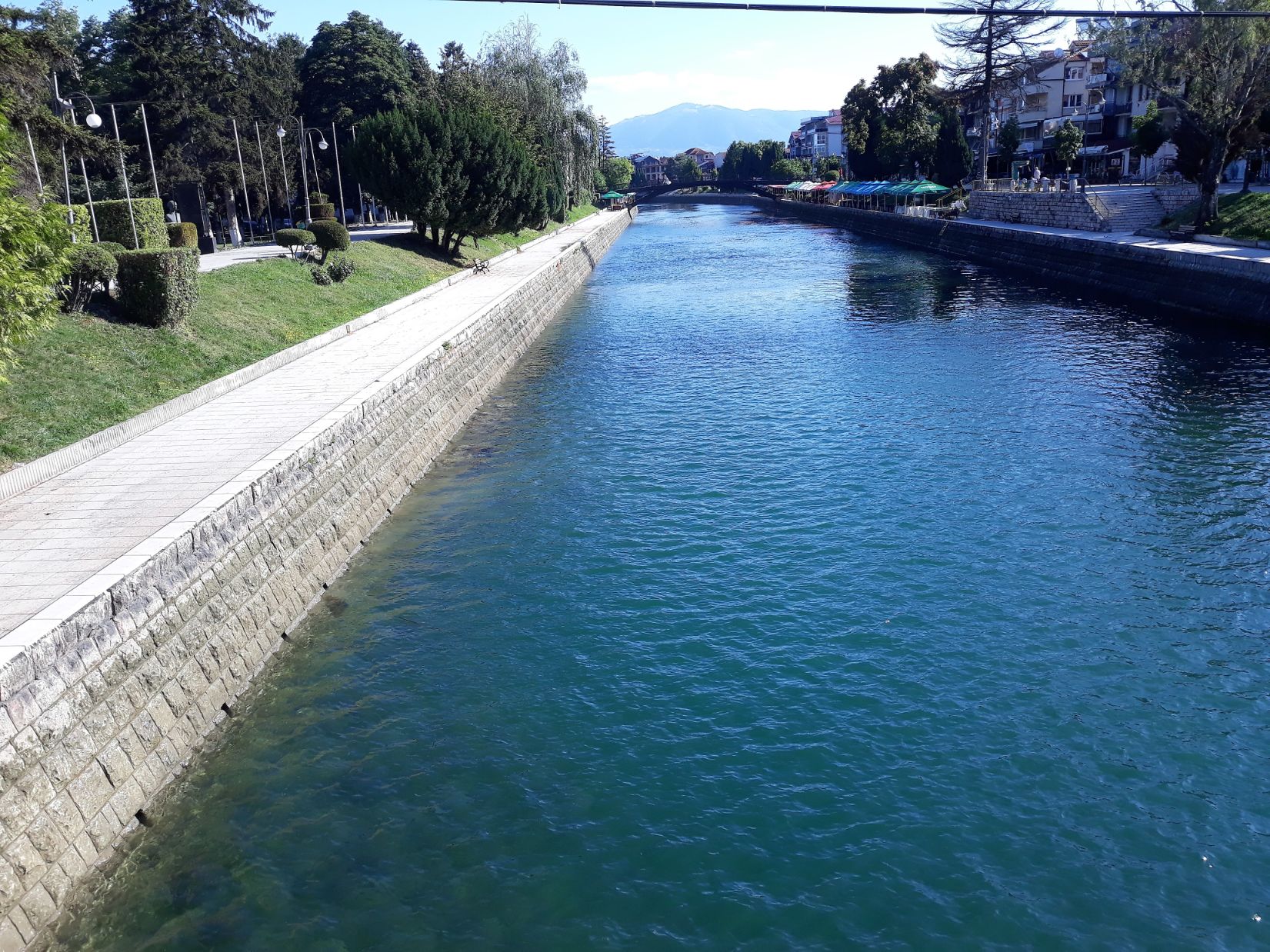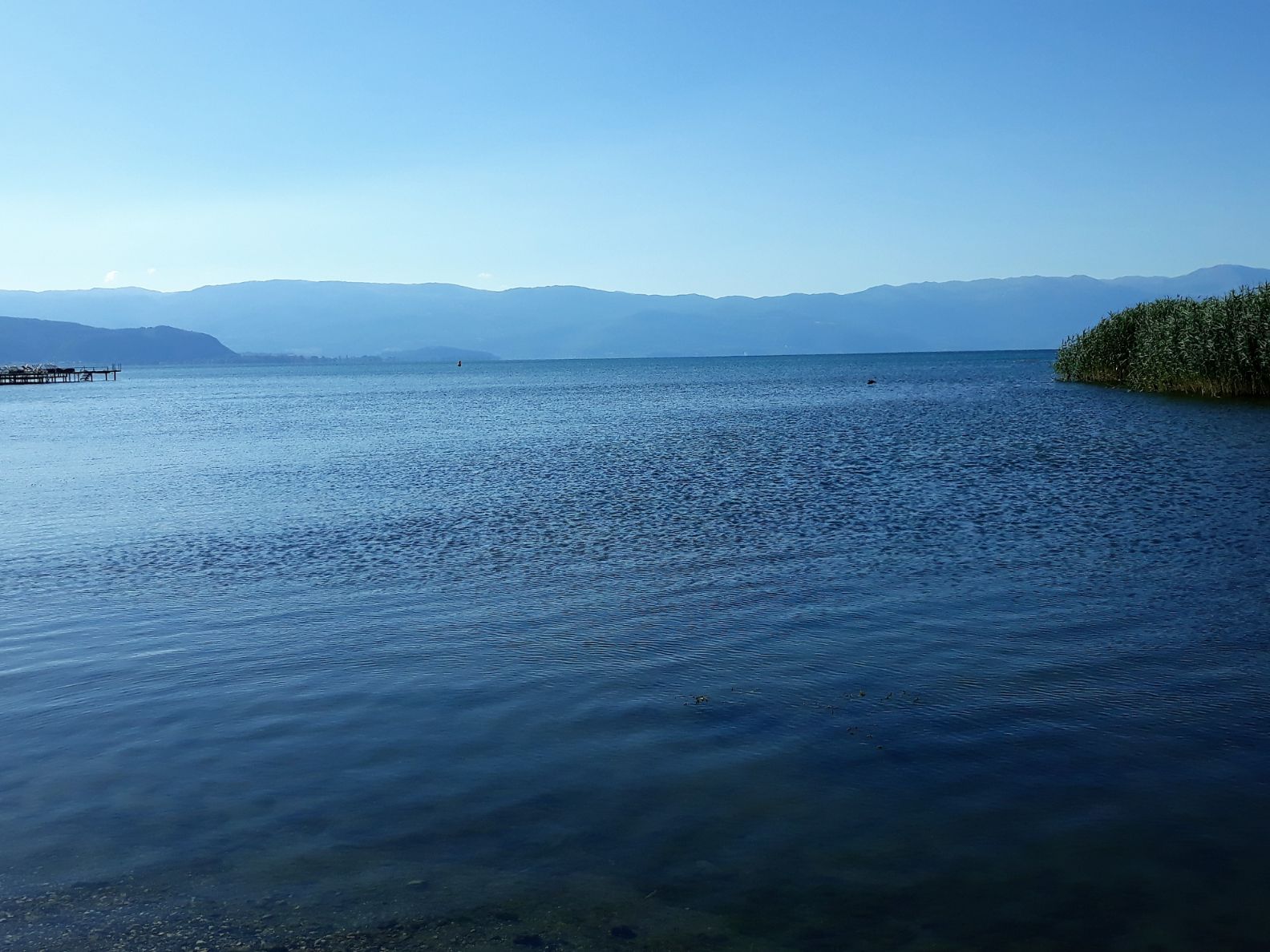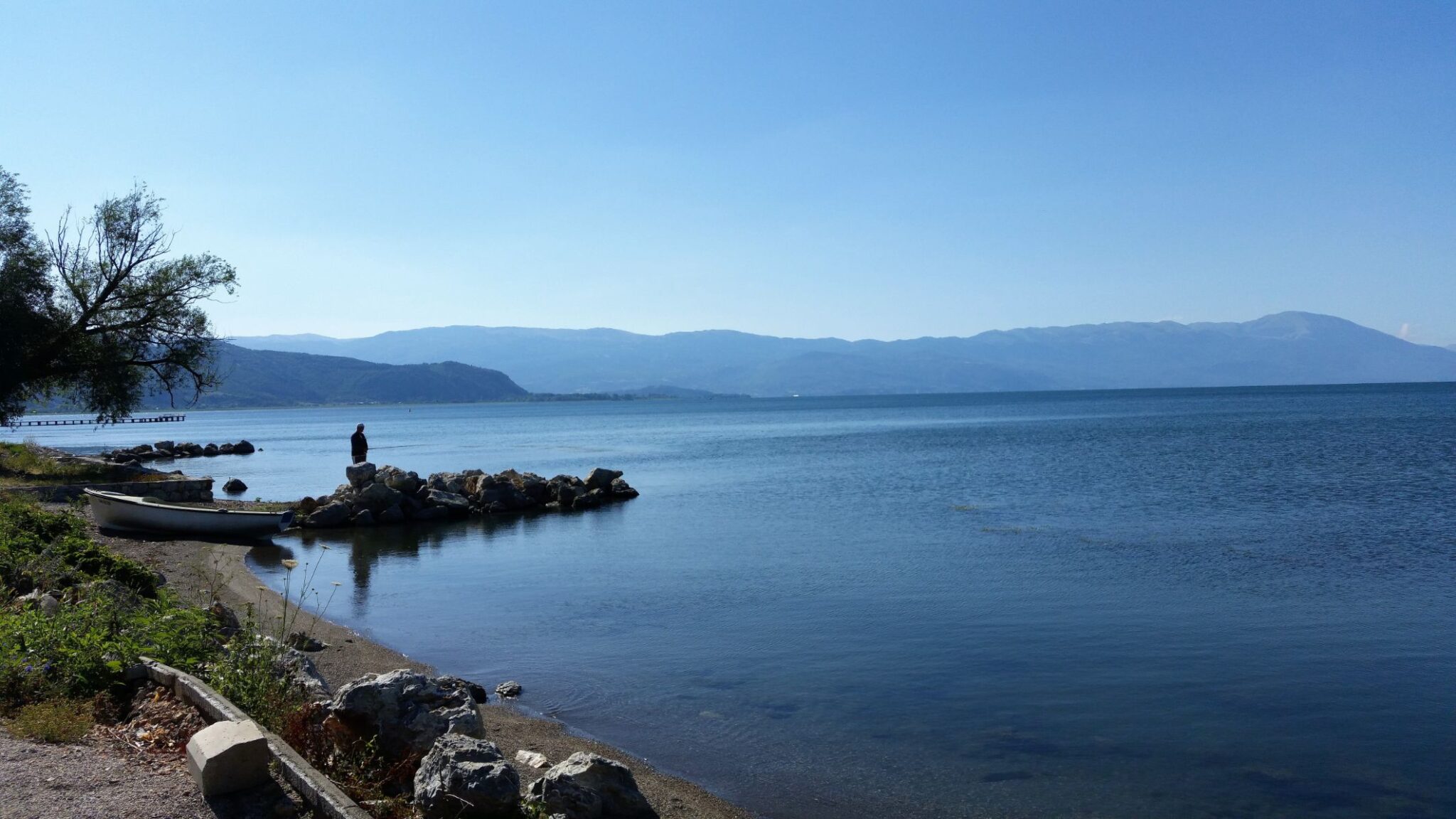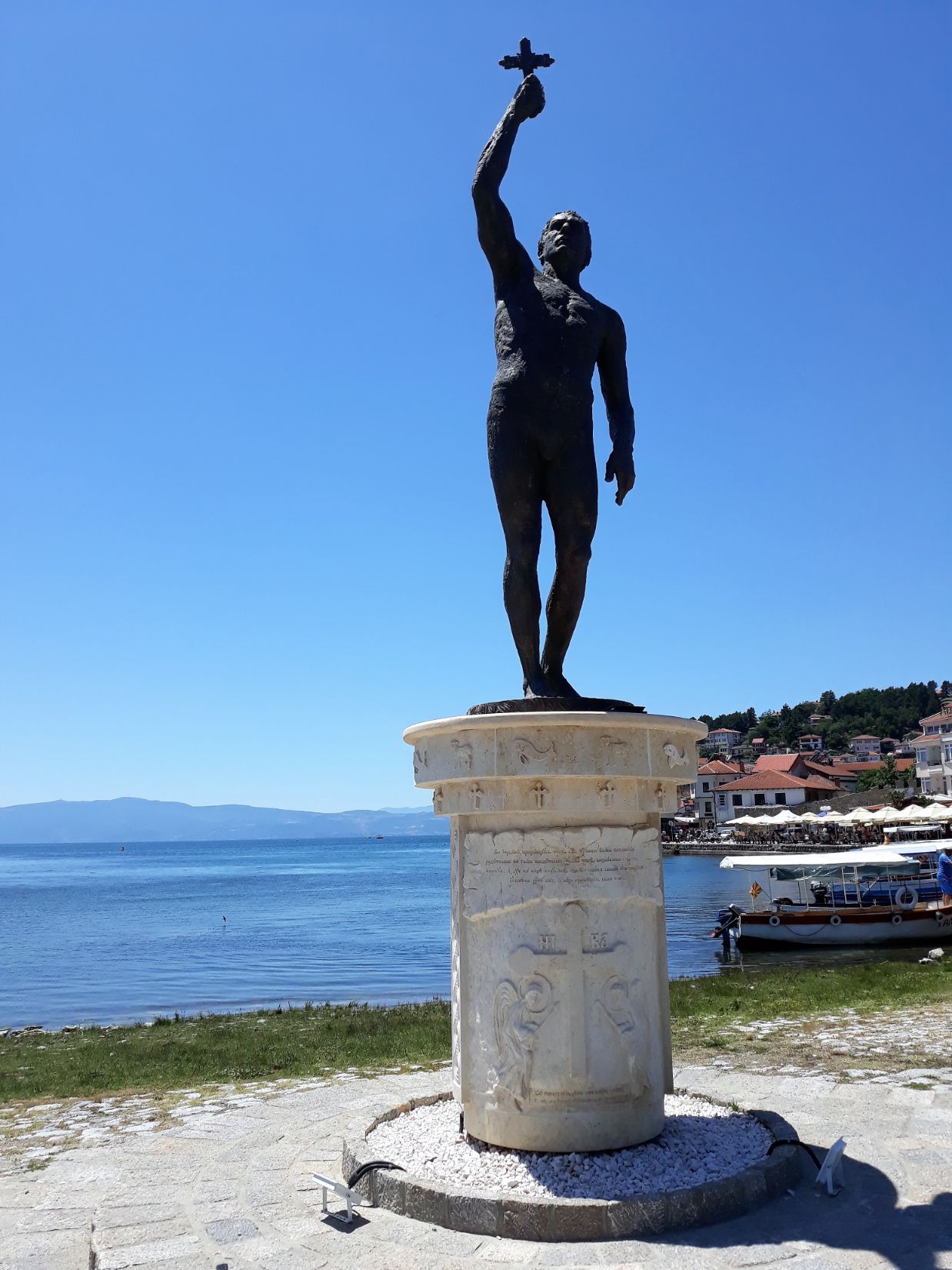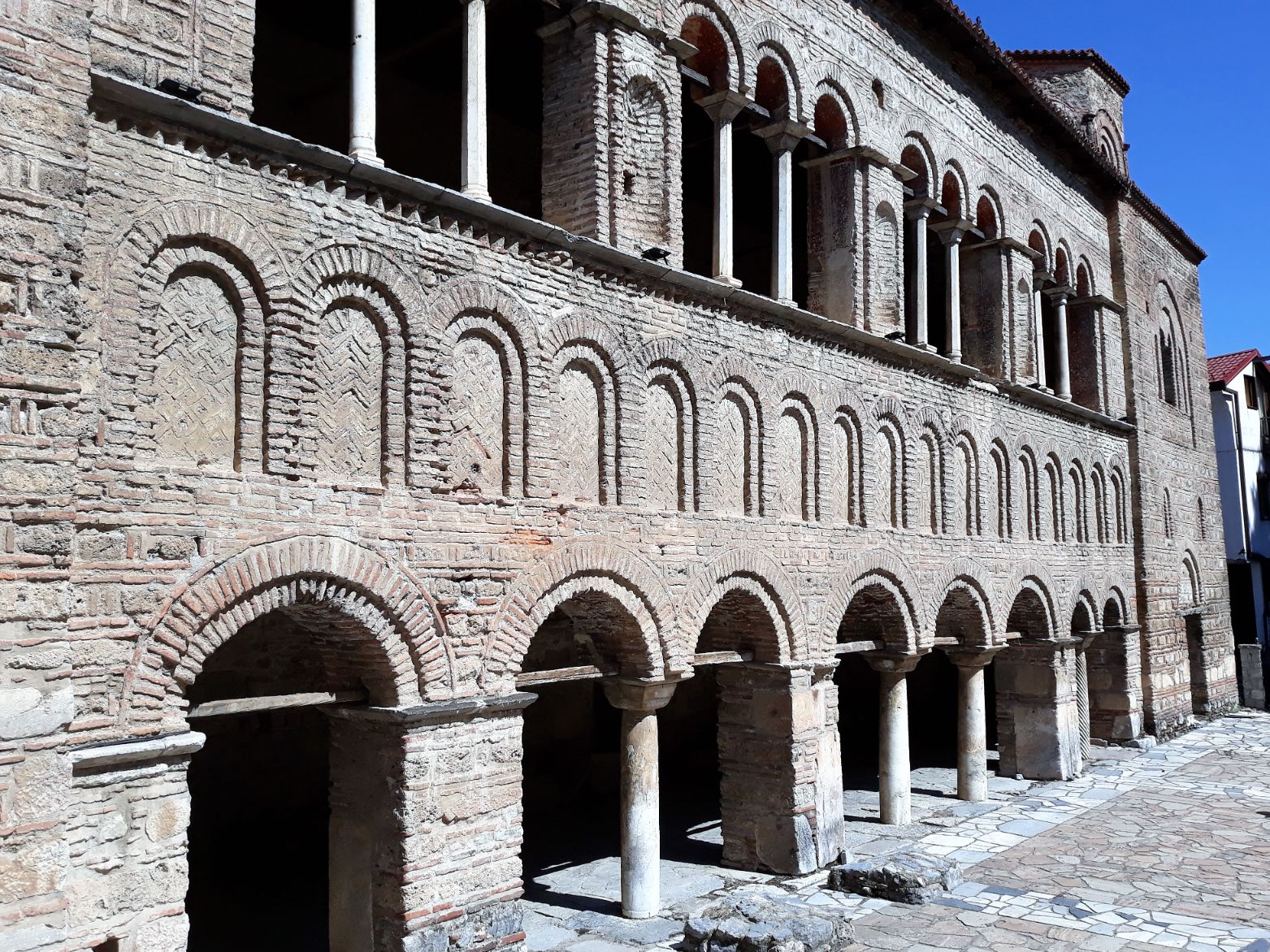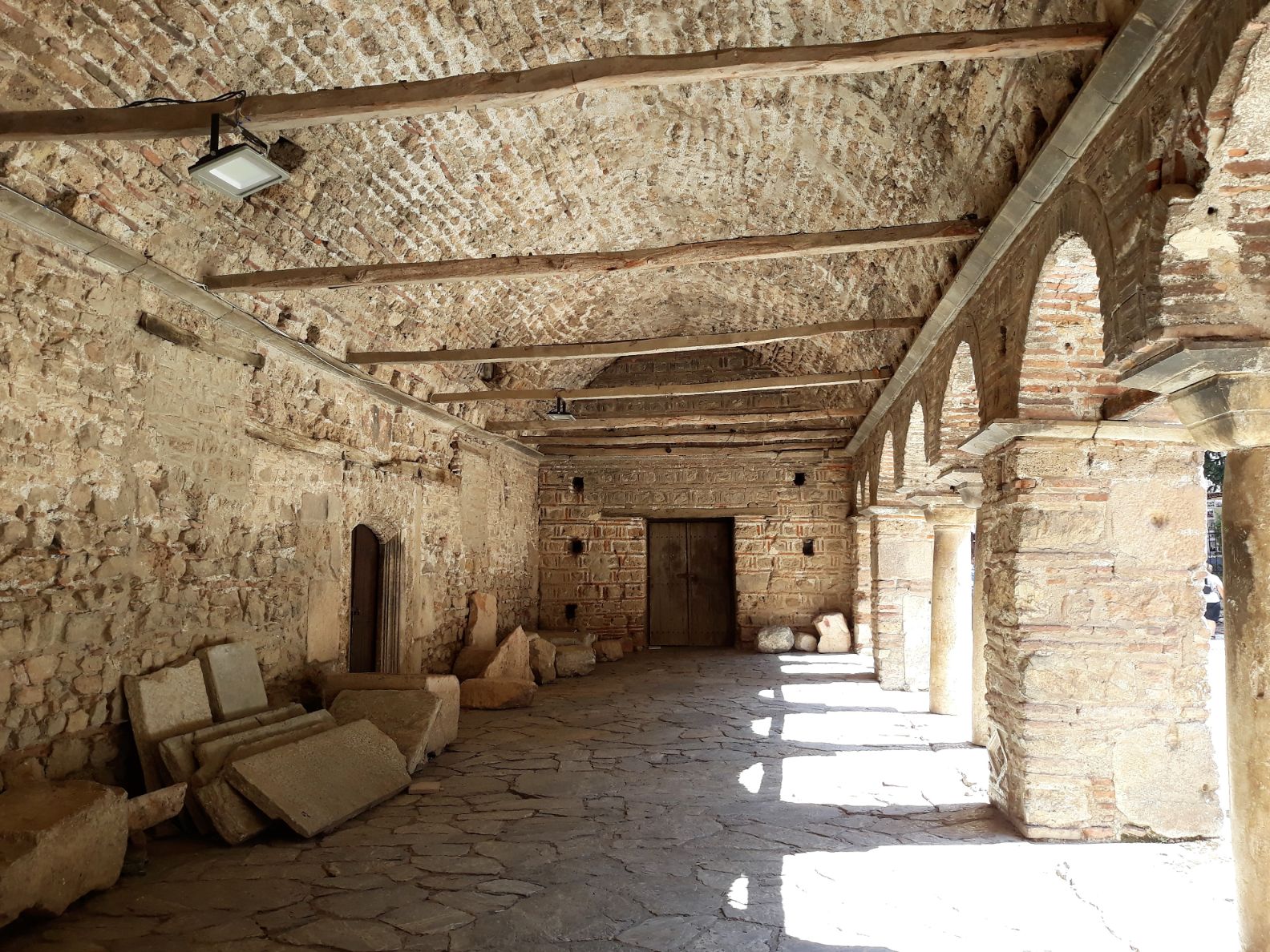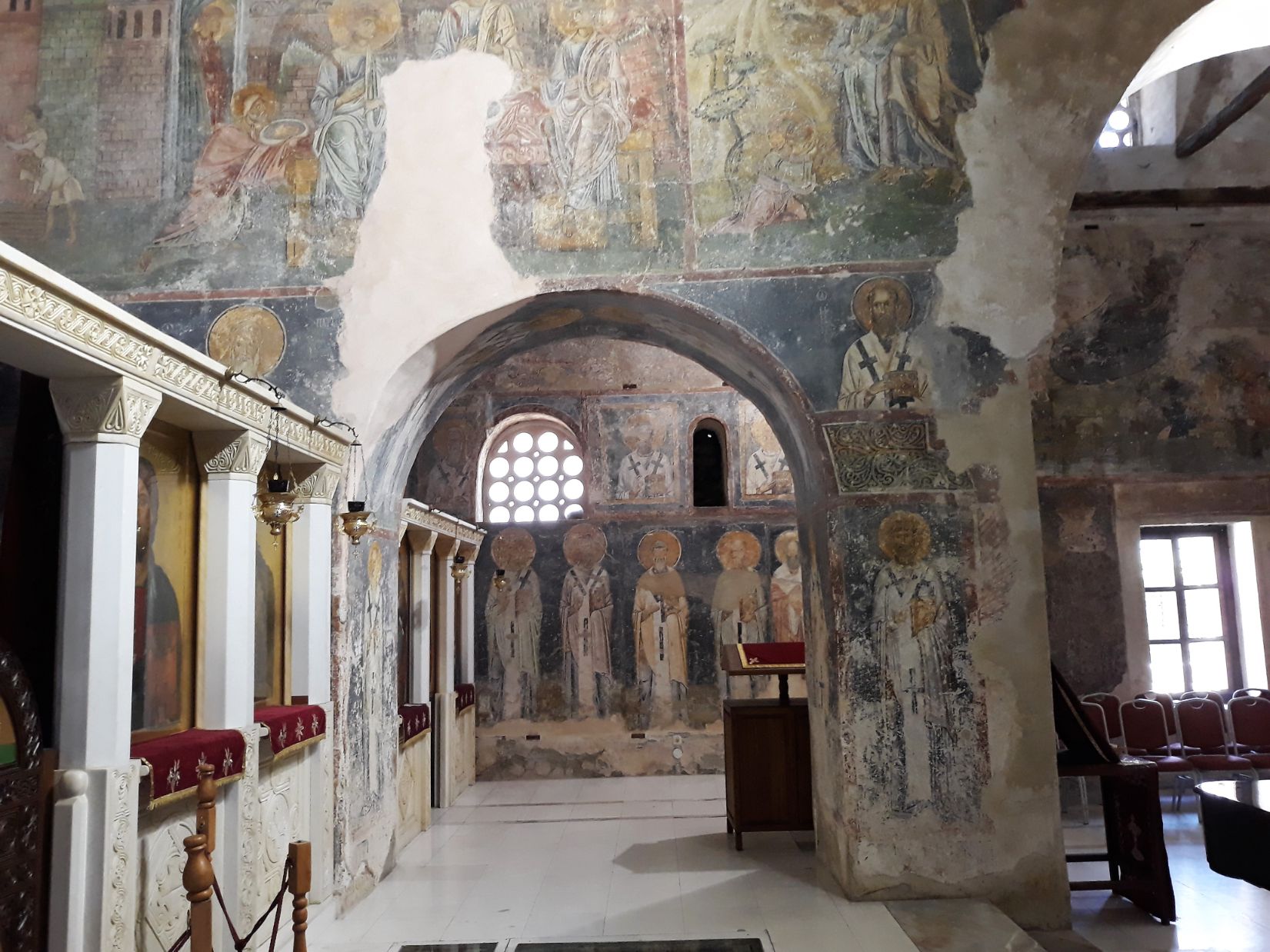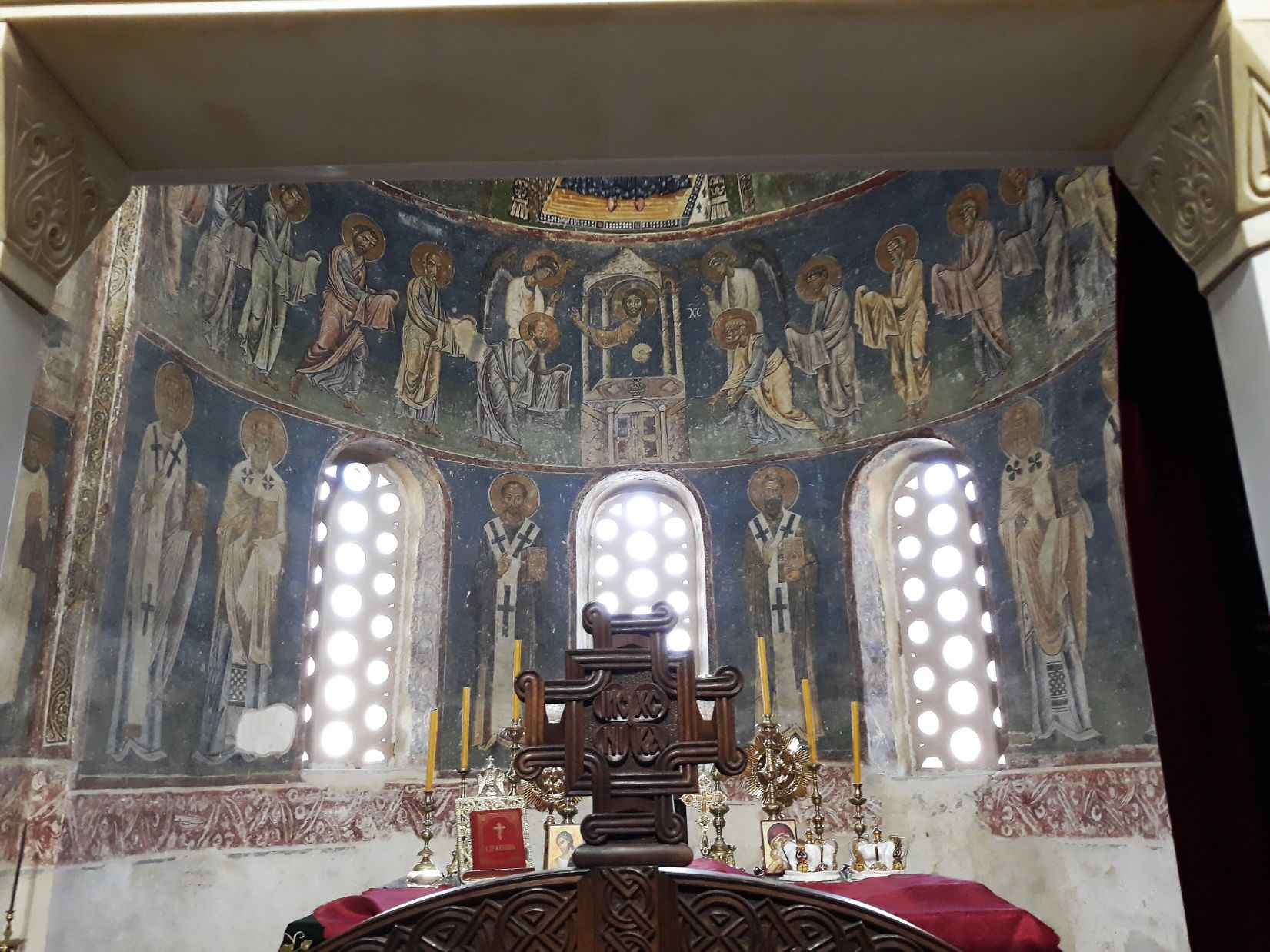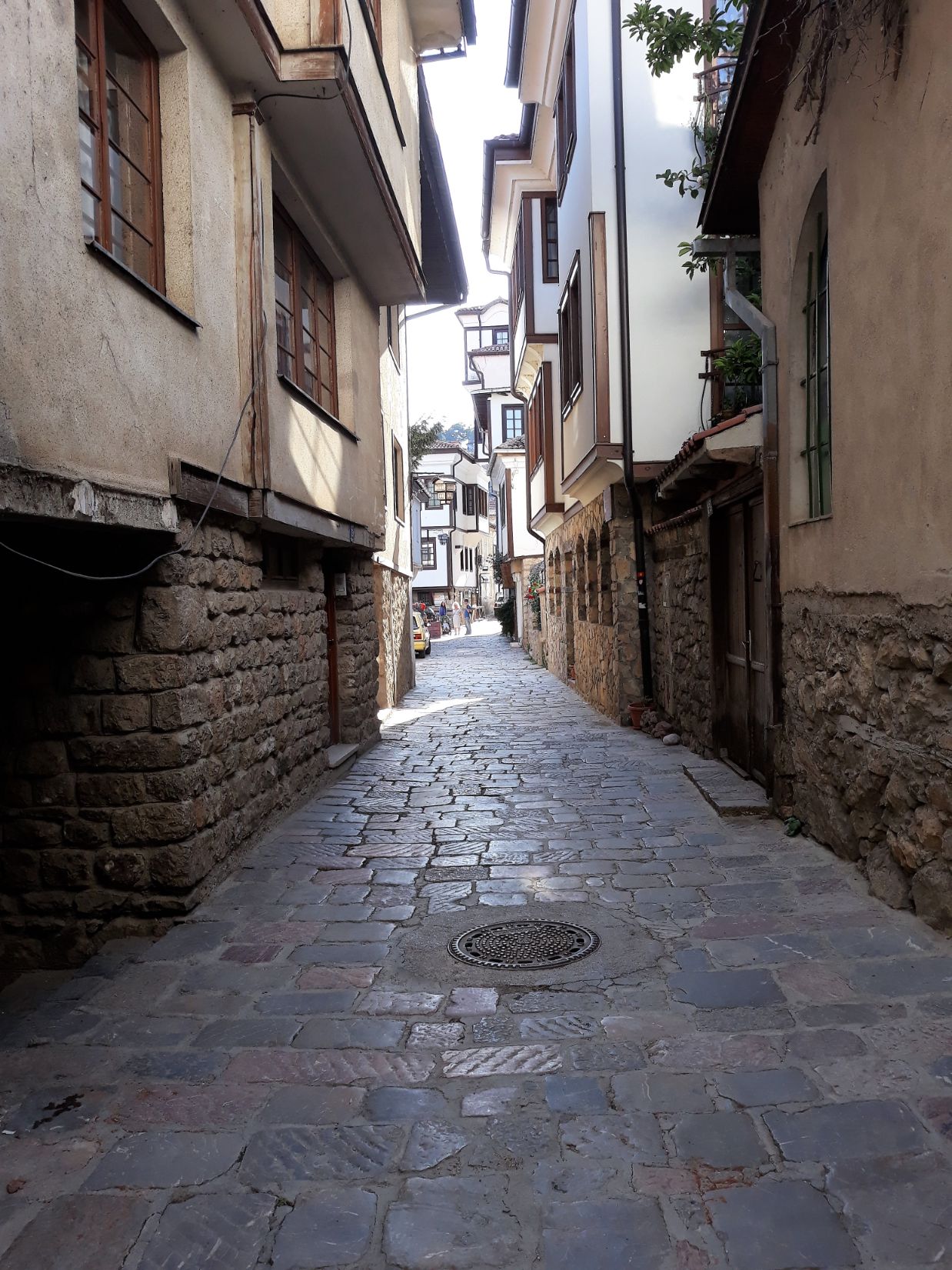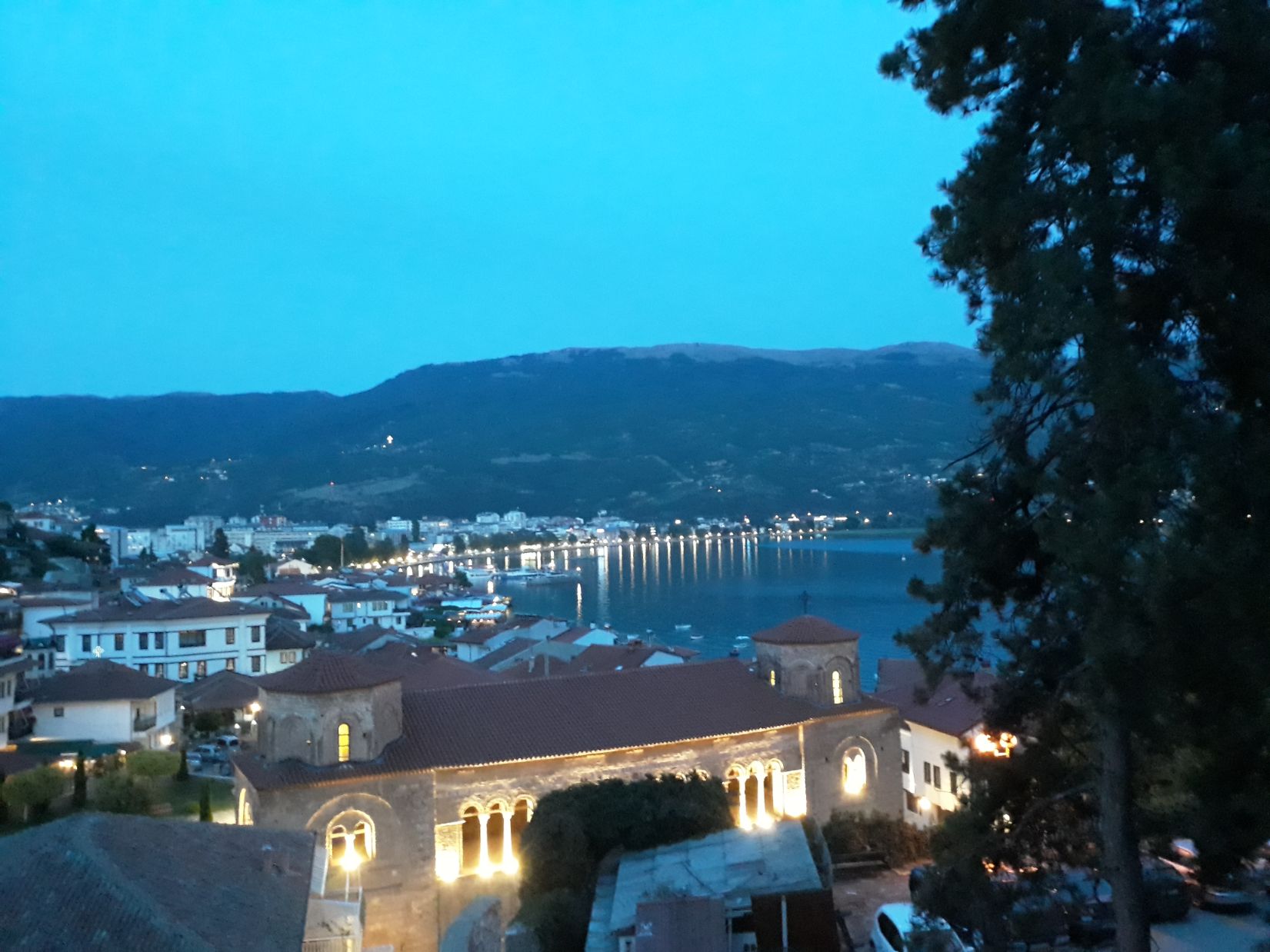Struga to Ohrid – July 11th
Distance: 15.3 km – Elevation +60 m -50 m
Weather: Sunny. Overnight thunderstorms. Temperature: High 23 degrees
Ferocious thunderstorms arrived around 6 pm last night and the streets of Struga were pounded with heavy rain and startling flashes of lightning lit up the dark sky. The storm seemed very close as I dined in the hotel restaurant with the loud claps of thunder reverberating through the hotel. The storm seemed to be trapped in the valley and kept me awake as it raged long into the early hours. Eventually subsiding and sleep came.
With an easy day ahead there was no need for an early start and I woke around 7.00 am. The water dribbled from the shower just enough to wash before it completely stopped. I learnt later that the storm had somehow knocked out the hotel water supply. I enjoyed a leisurely breakfast and walked out into temperatures of 14 degrees a substantial drop from the humid temperatures of yesterday. It was a beautiful morning, cool and fresh as I walked out of town and crossed the river Drin watching as a fisherman swung his rod out into the river.
It was wonderful walking weather for a gentle 15 kilometre walk around lake Ohrid to Ohrid my base for tonight. I passed a small bevvy of swans, mum and dad preening themselves in the waters of the lake and with them, four almost full-grown cygnets with hints of grey in their plumage. The waters of the lake with its varying shades of a glorious deep blue stretched out to the distant mountains. The colours and mountains reminded me a little of my walk around Lake Geneva.
I reached the outskirts of Ohrid at 11.00 am and passed by the Hajdar Pasha Mosque where a sign stated it was first constructed in 1492, the year that Christopher Columbus discovered the Americas. Ohrid was a thriving hubbub of residents and tourists as I reached the centre. I sat at a restaurant table by the shores of the lake and took in the surrounding beauty as I ate a light lunch. After lunch I walked along the lakeshore promenade with its monuments:
“The Catcher of a Cross” – A bronze statue standing 3 metres high depicting a human figure extracting the cross from the lake representing and remembering the important role of Christianity in Macedonia’s history. It was an old tradition to throw a small cross in the lake and whoever would be able to retrieve it would be blessed with good fortune for the following year.
“Saints Cyril And Methodius” – brothers who were Byzantine Christian theologians, Christian missionaries and the founders of the Glagolitic alphabet which was the first ever alphabet that was used to translate Old Slavic Church manuscripts. Their huge contribution to the country made the Orthodox Church enthrone the brothers with the title that made them stand equal to the 7 Apostles. Together the brothers travelled to the Middle East, Rome, Greta Moravia and even though St. Cyril passed away in 869, his brother carried on his work among the Slavs.
The monument pays homage to these two iconic saints who not just gave the Slavs a language but instilled deep faith and culture into the community. The statue itself shows one of the saints seated holding a book while the other saint is standing behind with his hand on the book.
“St. Kliment Ohridski” – St Clement was a notable writer, scholar and preacher to the Slavs. He was one of the most prominent disciples of Saints Cyril and Methodius who are credited for establishing the Glagolitic and Cyrillic scripts. His work with Christen Slavs is what made him an iconic figure and the fact that he started Ohrid’s Literary School is the reason why he is considered the patron of education in the Slav community and the patron saint of the Republic of Macedonia. He is also the first ever bishop of the Bulgarian Orthodox Church along with being one of the Apostles. After his death in the 10th century, the saint was buried at Saint Panteleimon Church where he still lays in peace.
The monument itself is the city’s way of remembering St. Clementine’s contribution. His statue lies at the centre of the bustling town and depicts the saint holding a number of houses with his left hand- representing his protective power that will always remain over the country.
“St Naum” – St Naum lived from 830-910 and was a writer and teacher. He built the famous Monastery of St Naum on the other side of Lake Ohrid.
I had booked into a B&B close to the Church of St.Sofia and it was excellent with a terrace providing views across the lake and town. In the evening I walked to the St.Sofia Church of Wisdom, built in the 11th century, it contains beautiful frescoes from the 11th, 12th and 13th century, Later I mingled with other walkers for a stroll through the town and finally finished my day with dinner in a seafood restaurant not far from my B&B.
